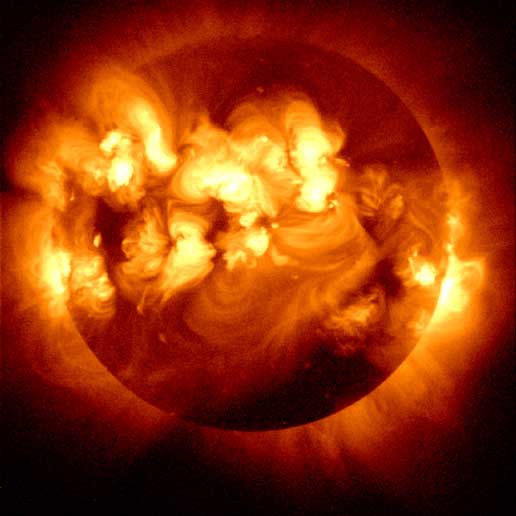Chapter 2. The Measure of Space
By the numbers, we’re 1.496 x 108 km from the Sun, aka 1 Astronomical Unit (AU). It takes about 8 minutes for light or any kind of radiation from the Sun to reach the Earth. Some events—like plasma thrown off from the Sun—can take 1-4 days to reach us. The sun throws out light (radio through gamma) as well as energetic electrons and protons, and big wind-like streams of hot hydrogen gas (solar plasma), as shown in Figure 2-1.

Figure 2-1. Yokkoh image of the Sun in UV showing its active nature (courtesy JAXA)
While Earth’s atmosphere is mostly nitrogen, up at Low Earth Orbit (LEO) has almost no atmosphere at all. We get the worst of both really—no air to use for breathing, but just enough molecules of air to cumulatively cause drag and eventually make our LEO satellites de-orbit.
Our atmosphere blocks most of the harder radiation the Sun puts out—X-rays and UV (especially, for UV, the Ozone Layer). By definition what we see on Earth is visible light, plus a little light UV and a fair amount of invisible radio emission. All that blocked stuff is visible from orbit, however.
In fact, that’s why we launch satellite telescopes—less atmosphere to block any kind of light.
Note some plastics (polymers) are sensitive to UV—they break down in the presence of UV. Fine on Earth, but terrible for space-going hardware. ESA maintains a large list of materials and their ...
Get Surviving Orbit the DIY Way now with the O’Reilly learning platform.
O’Reilly members experience books, live events, courses curated by job role, and more from O’Reilly and nearly 200 top publishers.

